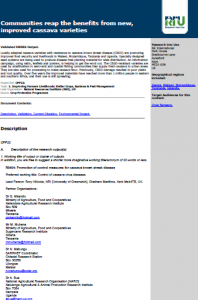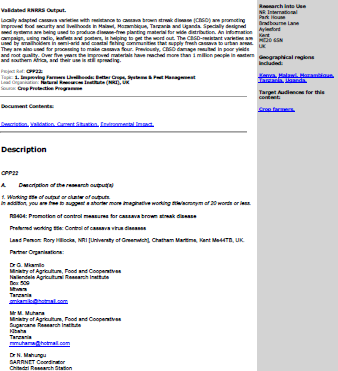Locally adapted cassava varieties with resistance to cassava brown streak disease (CBSD) are promoting improved food security and livelihoods in Malawi, Mozambique, Tanzania and Uganda. Specially designed seed systems are being used to produce disease-free planting material for wide distribution. An information campaign, using radio, leaflets and posters, is helping to get the word out. The CBSD-resistant varieties are used by smallholders in semi-arid and coastal fishing communities that supply fresh cassava to urban areas. They are also used for processing to make cassava flour. Previously, CBSD damage resulted in poor yields and root quality. Over five years the improved materials have reached more than 1 million people in eastern and southern Africa, and their use is still spreading.
Region: Kenya, Malawi, Mozambique, Tanzania, Uganda
Date published:
2007
Published by:
Research Into Use
Type of resource:
Research output overview
Resource topic:
Cassava
Project/Programme: Not specific
Pest/Disease: Cassava brown streak virus
Pages:
5
File type:
PDF (657 KB)



